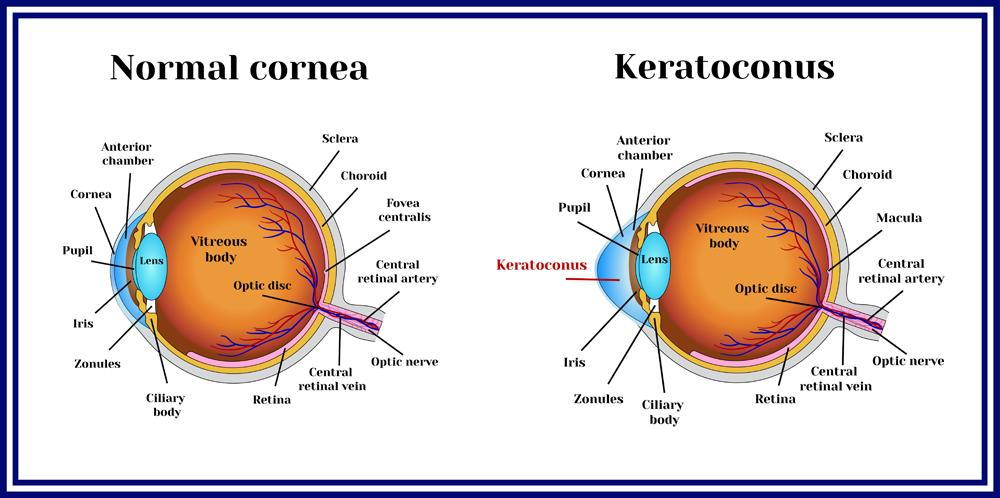What Is Keratoconus and How Is It Treated?
posted: Jul. 22, 2024.

Keratoconus can cause blurry vision and make everyday tasks like reading or driving difficult. At Butler Eye Care in Lebanon, MO, we provide comprehensive eye exams to learn more about your condition and treatments to help you see clearly. Continue reading to learn more about keratoconus and how it’s treated!
Understanding Keratoconus
Keratoconus is a progressive eye condition in which the normally round cornea becomes thin and bulges into a cone-like shape. This deformation can lead to significant vision distortion and difficulties in visual clarity. The condition typically begins in the late teens to early twenties and can affect both eyes, though it may progress at different rates in each eye.
Recognizing the Symptoms
If you have keratoconus, you may experience various symptoms, such as the following:
• Blurry vision
• Double vision
• Sensitivity to light
• Seeing halos around lights or ghost images
• Frequent prescription changes
• Difficulty wearing contact lenses
It’s important to visit our eye doctor as soon as you notice any signs to preserve your sight and prevent further complications.
Diagnosis
Diagnosing keratoconus usually involves a comprehensive eye exam that includes corneal topography, which create a map of the surface curvature of the cornea. This diagnostic tool helps to detect irregularities in the corneal shape and thickness. Early detection is crucial for effective management and treatment.
Treatments for Keratoconus
Treatment for keratoconus depends on the severity of the condition. In the early stages, it may be managed with corrective lenses such as glasses or contact lenses. As the condition progresses, more advanced treatments may be necessary. Some methods our optometrist may recommend include:
Corneal Cross-Linking: This treatment involves applying riboflavin (vitamin B2) drops to the cornea and then exposing it to ultraviolet light. The process strengthens the corneal tissue, which slows or halts the progression of the disease.
Intacs: Intacs are small, curved devices that are inserted into the cornea to help reshape it. They can improve vision and may reduce dependence on contact lenses or glasses.
Corneal Transplant: In severe cases where other treatments are not effective, a corneal transplant may be considered. This procedure involves replacing the damaged cornea with a donor cornea.
Managing Keratoconus
Regular follow-up appointments with our eye doctor are essential for managing keratoconus. Monitoring the progression of the disease and adjusting your care plan as needed can help protect your vision and eye health.
Contact Us for an Appointment Today
If you are seeking keratoconus treatment, let out team at Butler Eye Care in Lebanon, MO, help. To schedule your appointment, contact us at (417) 991-3200 today. When you need an optometrist near me, we are happy to assist you!
